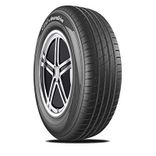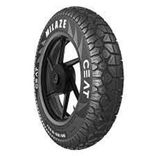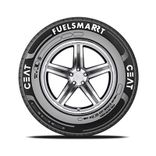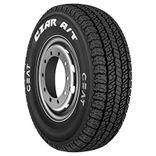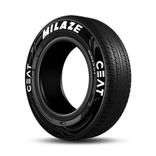Ad
Ad
How Do I Know When My Tyres Need to be Changed?
Learn how to tell when it's time to replace your car tyres to ensure your safety on the road. Explore signs like tread depth, age, cracks, vibrations, and handling.
Your car tyres are an essential part of your vehicle, as they are the only point of contact between your car and the road. Over time, tyres wear out and need to be replaced to ensure your safety on the road. However, many drivers are unsure of how to tell when it is time to replace their tyres. In this article, we will explore the signs that indicate it is time to replace your tyres.
Ad
Ad

Tread Depth
One of the most important factors to consider when replacing your tyres is the tread depth. The tread is the rubber on the outer surface of the tyre that makes contact with the road. Over time, the tread wears down, which reduces your tyres' ability to grip the road and increases the risk of skidding or hydroplaning.

To check the tread depth, you can use a tread depth gauge or the "penny test." To perform the penny test, place a penny in the tread with Lincoln's head facing down. If you can see the top of Lincoln's head, it is time to replace your tyres.
Age
Tyres also age, even if they are not used frequently. The rubber can deteriorate over time, which can cause cracks or bulges. The age of your tyres is usually indicated by the DOT (Department of Transportation) code on the sidewall. The code consists of four numbers, with the first two indicating the week of the year and the last two indicating the year the tyre was manufactured.

Tyres that are more than six years old should be replaced, regardless of their tread depth. Even if your tyres look fine, the rubber may have degraded, increasing the risk of a blowout or other tyre failure.
Cracks or Bulges
Visible cracks or bulges on the sidewall of your tyres can indicate a problem with the tyre's structure. This can occur due to age, damage, or exposure to extreme temperatures. These cracks and bulges weaken the tyre, making it more prone to failure.
If you notice any cracks or bulges on your tyres, it is time to replace them. Driving on damaged tyres can increase the risk of a blowout, which can be dangerous, especially at high speeds.

Vibrations or Wobbling
If you feel vibrations or wobbling in your vehicle while driving, it can be a sign of tyre problems. This can occur due to misalignment, unbalanced tyres, or other issues. Driving on uneven tyres can cause further damage to your tyres and other components of your vehicle, leading to more expensive repairs.
If you experience vibrations or wobbling while driving, have your tyres checked by a professional. They can diagnose the problem and advise you on how to fix it.

Poor Handling
If your car feels like it is not handling as well as it used to, it could be due to worn tyres. Worn tyres reduce your car's ability to grip the road, which can make it more difficult to control your vehicle, especially in wet or slippery conditions.
If you notice poor handling, it is time to have your tyres checked by a professional. They can inspect your tyres for signs of wear and damage and advise you on whether it is time to replace them.
Uneven Wear
Tyres can wear unevenly, which can be a sign of a problem with your vehicle's alignment, suspension, or tyre pressure. Uneven wear can lead to reduced traction and handling, as well as increased fuel consumption.

To check for uneven wear, inspect your tyres for any signs of wear on one side or in a specific area. You can also check for wear by running your hand over the surface of the tyre. If you feel any ridges or bumps, it is a sign of uneven wear.
CarBike360 Says
In conclusion, it is important to know when it is time to replace your tyres to ensure your safety on the road. Tread depth, age, cracks or bulges, vibrations or wobbling, poor handling, and uneven wear are all signs that indicate it is time to replace your tyres. Regular inspection and maintenance of your tyres can help you identify these signs early and prevent potential accidents or tyre failures.
If you are unsure whether your tyres need to be replaced, it is always best to have them checked by a professional. They can inspect your tyres for signs of wear and damage and advise you on whether it is time to replace them. Remember, your tyres are the only point of contact between your vehicle and the road, so it is important to ensure they are always in good condition.
More Articles

Best Low Maintenance SUV Cars Under 20 Lakh in India 2025
Looking for an SUV that's budget-friendly and easy to maintain? Discover the best low-maintenance SUVs under ₹20 lakh in India for 2025, including top models with great mileage, reliability, and affordable service costs.
06-May-2025 11:02 AM
Read Full Article
Best Low Maintenance SUV Cars Under 20 Lakh in India 2025
Looking for an SUV that's budget-friendly and easy to maintain? Discover the best low-maintenance SUVs under ₹20 lakh in India for 2025, including top models with great mileage, reliability, and affordable service costs.
06-May-2025 11:02 AM
Read Full Article
Best Cruiser Bikes Under 10 Lakh Rupees in India 2025: Top Picks for Style and Comfort
Explore the best cruiser bikes under ₹10 lakh in India for 2025. Discover top models that offer a perfect blend of style, performance, and long-distance comfort.
06-May-2025 06:32 AM
Read Full Article
Best Cruiser Bikes Under 10 Lakh Rupees in India 2025: Top Picks for Style and Comfort
Explore the best cruiser bikes under ₹10 lakh in India for 2025. Discover top models that offer a perfect blend of style, performance, and long-distance comfort.
06-May-2025 06:32 AM
Read Full Article
Complete Guide to Lubricants for Passenger Vehicles: Cars, Bikes & Scooters
Discover the best lubricants for cars, bikes, and scooters. Improve performance, mileage, and engine life with expert tips.
30-Apr-2025 07:18 AM
Read Full Article
Complete Guide to Lubricants for Passenger Vehicles: Cars, Bikes & Scooters
Discover the best lubricants for cars, bikes, and scooters. Improve performance, mileage, and engine life with expert tips.
30-Apr-2025 07:18 AM
Read Full Article
Top 10 Premium Electric Cars in India & The Best Luxury EVs to Buy
Explore the top 10 premium electric cars in India, offering luxury, performance, and cutting-edge technology. Find the best EVs from brands like Audi, BMW, Mercedes, Porsche, and more.
03-Apr-2025 07:39 AM
Read Full Article
Top 10 Premium Electric Cars in India & The Best Luxury EVs to Buy
Explore the top 10 premium electric cars in India, offering luxury, performance, and cutting-edge technology. Find the best EVs from brands like Audi, BMW, Mercedes, Porsche, and more.
03-Apr-2025 07:39 AM
Read Full Article
Royal Enfield’s Classic Legacy & A Journey Through Time and Innovation
Discover the rich legacy of Royal Enfield’s Classic series, from the first-generation models to the latest Classic 650. Explore its timeless design, powerful performance, and evolution through the years.
01-Apr-2025 08:48 AM
Read Full Article
Royal Enfield’s Classic Legacy & A Journey Through Time and Innovation
Discover the rich legacy of Royal Enfield’s Classic series, from the first-generation models to the latest Classic 650. Explore its timeless design, powerful performance, and evolution through the years.
01-Apr-2025 08:48 AM
Read Full Article
The Xtreme 250R & Xpulse 210: A New Benchmark in Performance and Versatility
Hero MotoCorp elevates its game with the Xtreme 250R and Xpulse 210, two motorcycles designed to set new benchmarks in performance and versatility.
26-Mar-2025 02:12 PM
Read Full Article
The Xtreme 250R & Xpulse 210: A New Benchmark in Performance and Versatility
Hero MotoCorp elevates its game with the Xtreme 250R and Xpulse 210, two motorcycles designed to set new benchmarks in performance and versatility.
26-Mar-2025 02:12 PM
Read Full ArticleAd
Ad






